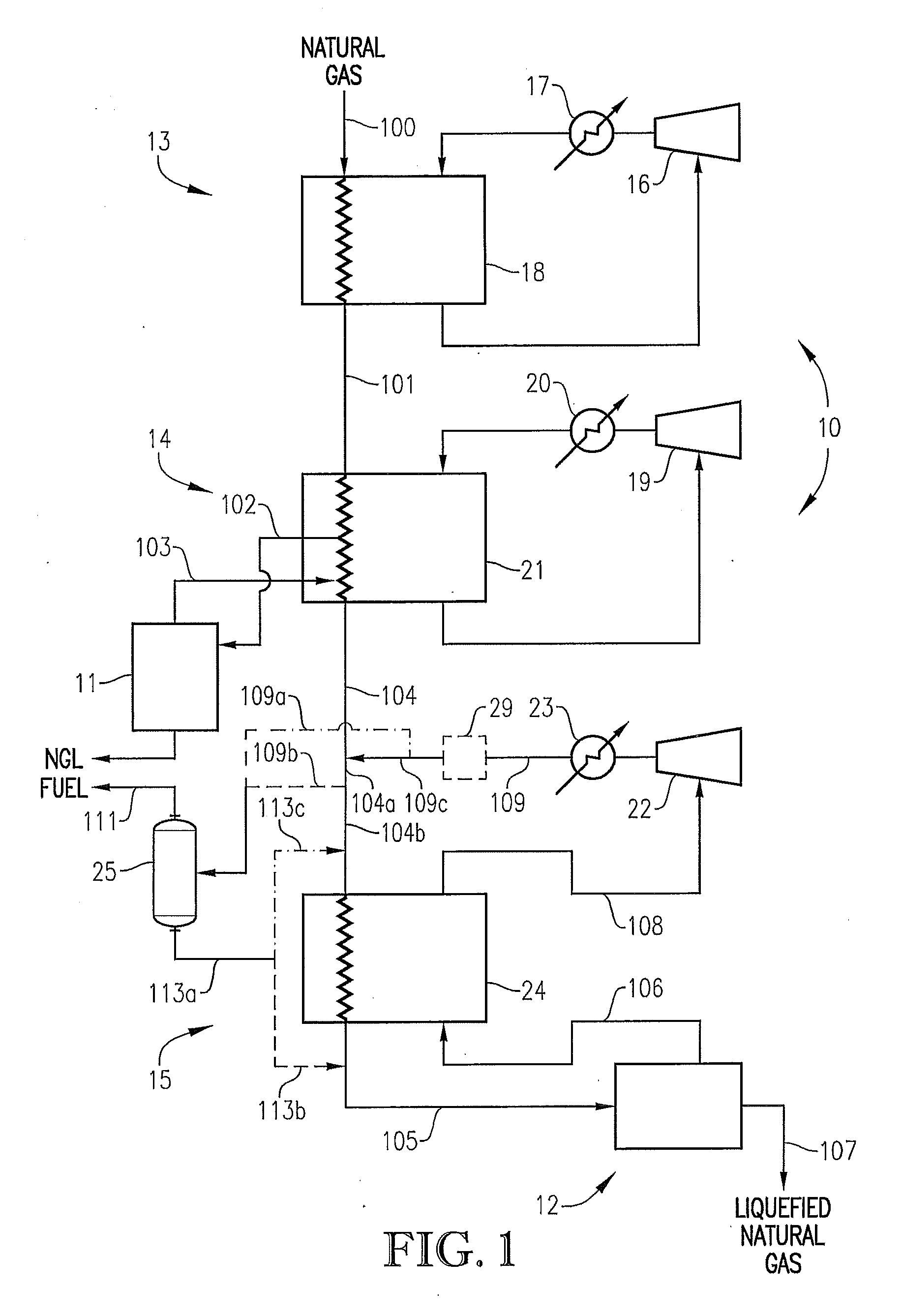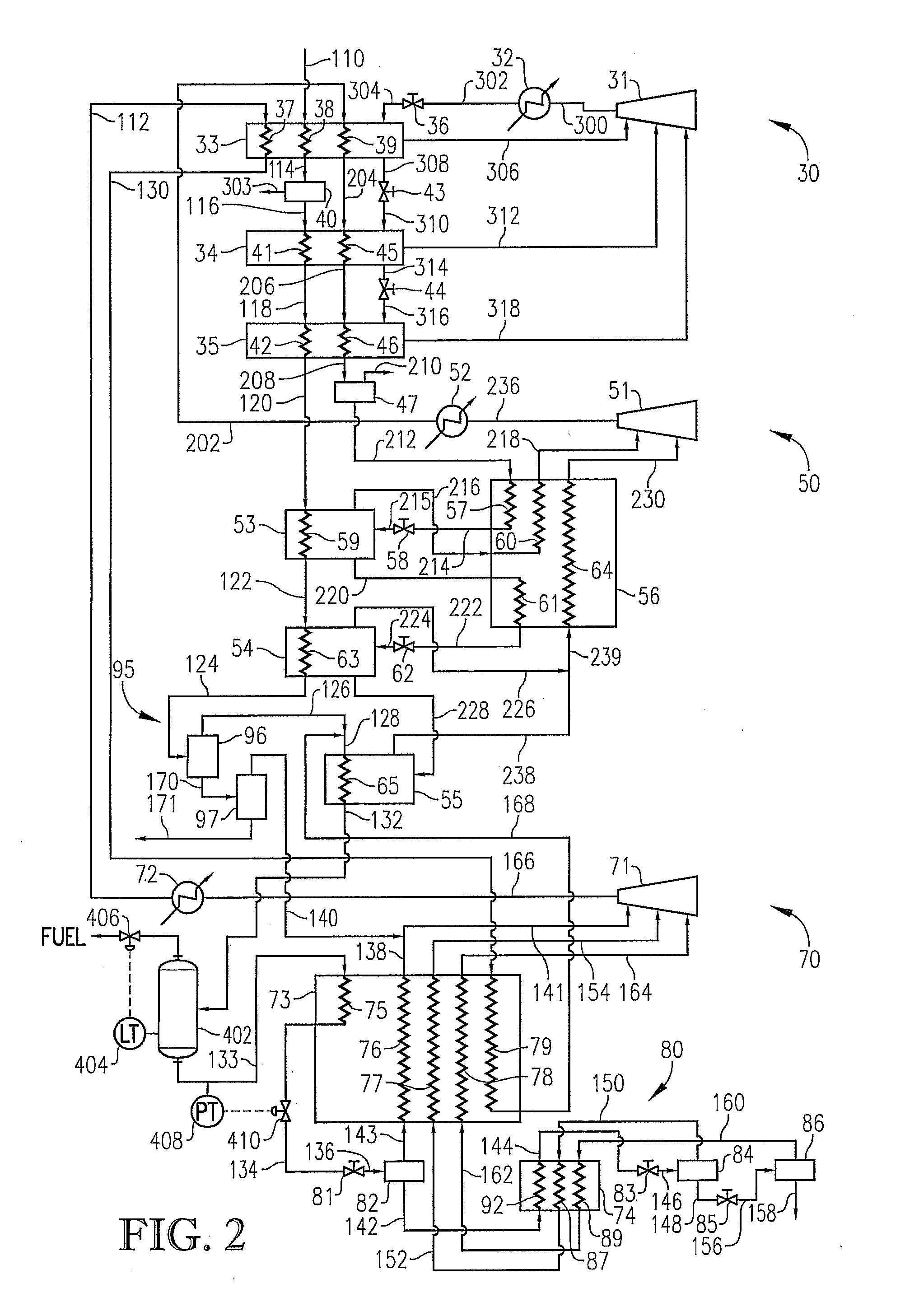System for incondensable component separation in a liquefied natural gas facility
a technology of incondensable components and liquefied natural gas, which is applied in the direction of lighting and heating apparatus, refrigeration and liquifaction, and solidification, etc. it can solve the problems of reducing the refrigeration capacity (i.e. duty) of the contaminated refrigeration cycle, requiring expensive pressure-containing vessels for storage and transportation, and increasing the concentration of incondensable materials. undesirable effects
- Summary
- Abstract
- Description
- Claims
- Application Information
AI Technical Summary
Benefits of technology
Problems solved by technology
Method used
Image
Examples
Embodiment Construction
[0018]In accordance with one embodiment, the present invention can be implemented in a facility used to cool natural gas to its liquefaction temperature to thereby produce liquefied natural gas (LNG). The LNG facility generally employs one or more refrigerants to extract heat from the natural gas and then reject the heat to the environment. Numerous configurations of LNG systems exist, and the present invention may be implemented in many different types of LNG systems.
[0019]In one embodiment, the present invention can be implemented in a mixed refrigerant LNG system. Examples of mixed refrigerant processes can include, but are not limited to, a single refrigeration system using a mixed refrigerant, a propane pre-cooled mixed refrigerant system, and a dual mixed refrigerant system. In general, mixed refrigerants can comprise hydrocarbon and / or non-hydrocarbon components. Examples of suitable hydrocarbon components typically employed in mixed refrigerants can include, but are not limi...
PUM
 Login to View More
Login to View More Abstract
Description
Claims
Application Information
 Login to View More
Login to View More - R&D
- Intellectual Property
- Life Sciences
- Materials
- Tech Scout
- Unparalleled Data Quality
- Higher Quality Content
- 60% Fewer Hallucinations
Browse by: Latest US Patents, China's latest patents, Technical Efficacy Thesaurus, Application Domain, Technology Topic, Popular Technical Reports.
© 2025 PatSnap. All rights reserved.Legal|Privacy policy|Modern Slavery Act Transparency Statement|Sitemap|About US| Contact US: help@patsnap.com



